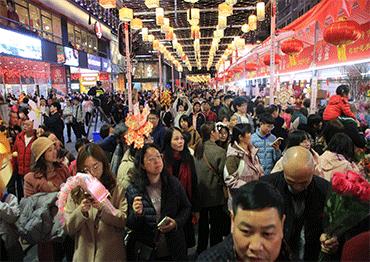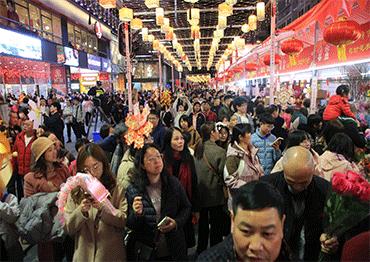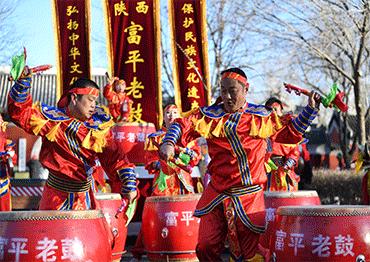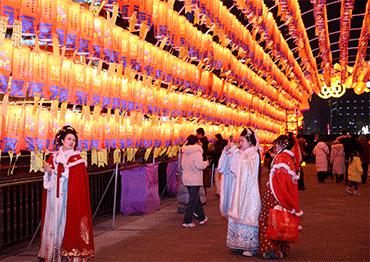During the Ming Dynasty (1368- 1644), even more unique customs caught on that embody China’s agrarian roots. A cracking good example is “whipping the ox.”
In ancient times, oxen were essential for spring plowing, but they often resisted work during the winter and needed to be persuaded. As valuable assets, people were reluctant to whip them, so they created mock oxen out of clay or paper and used willow branches to whip them symbolically. This ritual, accompanied by ceremonial plowing, marked the beginning of the farming season. Although modern China no longer relies on oxen for plowing, the tradition of whipping the ox remains an entertaining custom in many regions during the Spring Festival.
Other customs are less down to earth. The Kitchen God, regarded as the household deity, is believed to ascend to the Jade Emperor – the supreme deity in heaven – on the 23rd or 24th day of the 12th lunar month to report on the family’s deeds over the past year. Before his departure, families hold an elaborate farewell ceremony, offering specific foods such as zao tang (a sticky malt sugar candy), rice wine and fruits. The stickiness of zao tang is intended to seal the Kitchen God’s mouth so he will report only good things, while the rice wine is to make him tipsy and forget any negative comments. Sugarcane symbolizes the hope for continuous improvement, apples represent peace and safety, and oranges signify good fortune and prosperity.
New Year pictures, a unique form of Chinese folk art, have become a beloved tradition during the Spring Festival. Comprising simple lines, bright colors and lively scenes, these festive decorations not only beautify homes but also carry auspicious meanings.
For another taste of spring, look no further than spring pancakes. Filled with shredded radishes and other vegetables, eating these thin flour treats symbolizes welcoming the arrival of spring and the hope for a bountiful harvest.
Solving lantern riddles is a popular pastime during the festival, where people write riddles on colorful lanterns for others to guess. Lanterns symbolize hope, and the riddles reflect aspirations for a smooth year ahead.
During the Qing Dynasty (1644- 1911), dragon and lion dances, opera performances and parades became prominent Spring Festival traditions. Dragons and lions are considered auspicious creatures in Chinese culture, and performances featuring them are meant to drive away evil spirits and welcome good fortune.
In the Chaoshan region of Guangdong Province and the Zhangzhou area of Fujian Province, the yingge dance is performed – a folk dance that blends martial arts, local theater and other regional arts. Dancers hold short wooden sticks in each hand, striking them together rhythmically with vigorous movements. The leader traditionally performs a snake dance, reflecting local reverence for snakes.
After the Xinhai Revolution, which overthrew the Qing Dynasty and established the Republic of China (1911- 1949), the Gregorian calendar was introduced, separating official holidays from traditional folk festivals. In 1912, Sun Yat-sen, upon becoming the provisional president in Nanjing, announced the adoption of the Gregorian calendar in all provinces. In 1914, the Ministry of the Interior of the Beijing government approved a proposal to designate the first day of the lunar new year as the official Spring Festival, formally renaming the traditional lunar new year celebration.
Following the founding of the People’s Republic of China in 1949, the Gregorian calendar became the official date system. The central government approved the “National Holidays and Commemorative Days Regulations,” designating the Spring Festival as an official holiday. Since the 1980s, with the advance of reform and opening-up policies, there has been a resurgence of traditional festivals, with the Spring Festival regaining popularity and cultural significance.
As one of the most important traditional festivals in Chinese culture, the influence of the Spring Festival has expanded globally. According to incomplete statistics, nearly 20 countries and regions now recognize it as an official holiday, and its customs have reached almost 200 countries and regions, making it a major cultural event enjoyed by people worldwide. In 2025, the Year of the Snake, the world celebrated the first UNESCO-recognized edition of the Spring Festival.

 Old Version
Old Version


